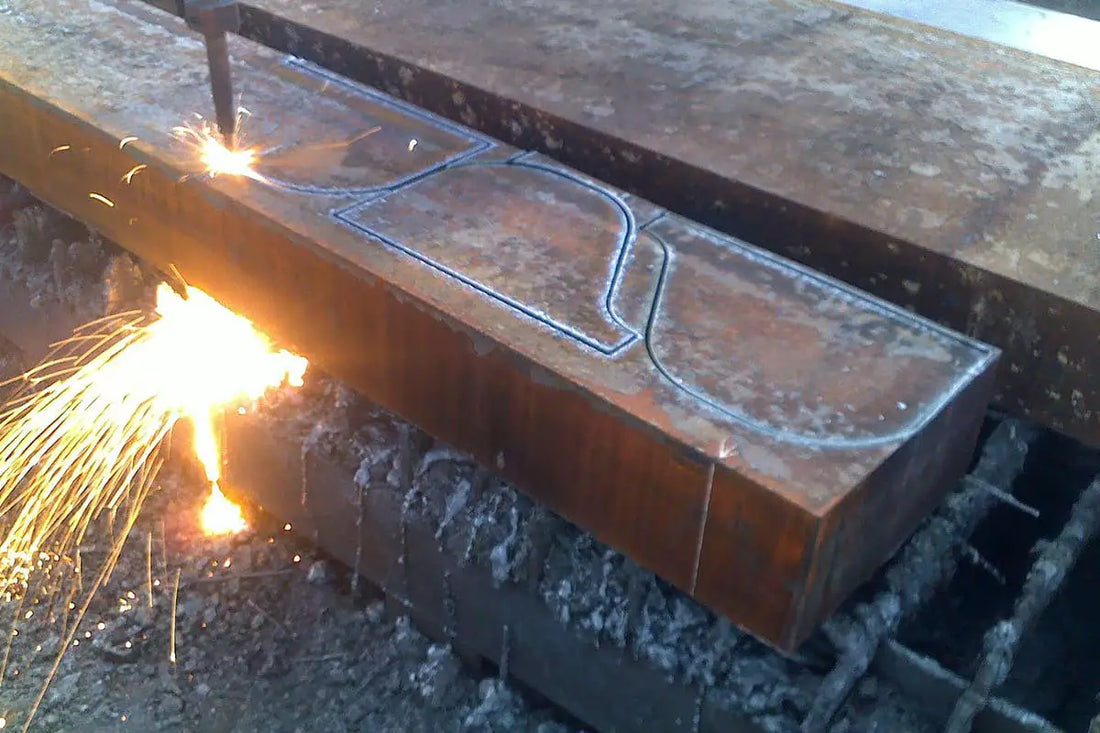1.0 Objective
To further standardize the workshop's flame cutting work and regulate the management of flame cutting operations, this set of rules is established.
2.0 Scope of Application
These rules apply to our company's control over flame cutting standard operating procedures (including the cutting methods of manual torches, semi-automatic cutting machines and CNC flame cutting machines).

3.0 Compilation Base
JB/T5000.2-2007 “General Technical Conditions for Heavy Machinery, Part 2: Flame Cut Parts”,
JB3092-82 “Technical Requirements for Flame Cutting Surface Quality.
4.0 Content
4.1 Preparation before cutting
4.1.1 Inspect the workspace and clear any obstructions to cutting. Flammable or explosive items should not be near the workspace.
4.1.2 Inspection of flame cutting equipment:
a) Check the hose connecting the gas source and cutting equipment for leaks and that the gas source is working properly.
b) Check that the torch is working correctly. Cutting wind lines for all torches must be straight, transparent cylinders; otherwise, a through needle must be used to clean the internal bore of the torch.
c) Check whether the longitudinal displacement mechanism, horizontal adjustment mechanism and up and down adjustment mechanism of the torch are in normal condition.
4.1.3 According to the layout of the cutting workshop, carefully check the width, length and thickness of the steel plate to be cut and whether the material meets the requirements.
4.1.4 Raise the steel plate to the appropriate cutting position.
4.1.5 Adjust the position of the steel plate, ensuring that both sides of the plate are parallel to the cutting direction. Make sure the entire steel plate is in a uniform horizontal state, and clean the surface of the steel plate.
4.1.6 When manually or semi-automatically cutting, draw lines at the end of the steel sheet according to the width of the material to be cut from the layout.
a) Consider the width of the cutting seam when drawing lines.
b) The tolerance allowed for the width of the cutting strip: for H beams, the tolerance range for the wings and web is 0~2mm; for wings and webs of box columns, the tolerance range should be 0~+2mm.
4.2 Cutting Techniques
4.2.1 Neutral flame must be used for preheating and cutting.
4.2.2 Choose an appropriate nozzle size and cutting process parameters according to the thickness of the steel plate to be cut.
Follow the parameters specified in Table 1.
Table 1: Selection table for cutting process parameters of flame cutting machine (oxygen-propane)
| Cutting nozzle specifications. & Model | Cutting oxygen opening diameter. (mm) |
Cutting thickness (mm) |
Cutting speed (mm/min) |
Oxygen pressure (MPa) |
Propane Pressure (MPa) |
Cutting width (mm) |
Oxygen consumption (m³/h) |
Preheating time (s) |
| GKJ3-1 | 0.6mm | 5-10 | 750-600 | 0.7 | 0.04 | ≤1mm | ||
| GKJ3-2 | 0.8mm | 10-20 | 600-450 | 0.7 | 0.04 | ≤1.5mm | ||
| GKJ3-3 | 1mm | 20-40 | 450-380 | 0.7 | 0.04 | ≤2mm | 10-13 | |
| GKJ3-4 | 1.25mm | 40-60 | 380-320 | 0.7 | 0.04 | ≤2.3mm | 12-15 | |
| GKJ3-5 | 1.5mm | 60-100 | 320-250 | 0.7 | 0.04 | ≤3.4mm | 16-17 | |
| GKJ3-6 | 1.75mm | 100-150 | 250-160 | 0.7 | 0.04 | ≤4mm | 18-22 | |
| GKJ3-7 | 2mm | 150-180 | 160-130 | 0.7 | 0.04 | ≤4.5mm | 24-32 | |
| GKJ3-8 | 2.3mm | 180-210 | 130-110 | 0.7 | 0.04 | ≤5mm | 31-40 | |
| GKJ3-9 | 2.6mm | 210-250 | 110-90 | 0.7 | 0.04 | ≤5.5mm | ||
| GKJ3-10 | 3.2mm | 250-300 | 90-60 | 0.7 | 0.04 | ≤7mm | ||
| GKJ3-1A | 0.6mm | 5-10 | 560-450 | 0.5 | 0.04 | ≤1mm | ||
| GKJ3-2A | 0.8mm | 10-20 | 450-340 | 0.5 | 0.04 | ≤1.5mm | ||
| GKJ3-3A | 1mm | 20-40 | 340-250 | 0.5 | 0.04 | ≤2mm | 10-13 | |
| GKJ3-4A | 1.25mm | 40-60 | 250-210 | 0.5 | 0.04 | ≤2.3mm | 12-15 | |
| GKJ3-5A | 1.5mm | 60-100 | 210-180 | 0.5 | 0.04 | ≤3.4mm | 16-17 | |
| GKJ3-6A | 1.75mm | 100-150 | 180-150 | 0.5 | 0.04 | ≤4mm | 18-22 | |
| GKJ3-7A | 2mm | 150-180 | 150-120 | 0.5 | 0.04 | ≤4.5mm | 24-32 | |
| GKJ3-8A | 2.3mm | 180-210 | 120-110 | 0.5 | 0.04 | ≤5mm | 31-40 | |
| GKJ3-9A | 2.6mm | 210-250 | 110-80 | 0.5 | 0.04 | ≤5.5mm | ||
| GKJ3-10A | 3.2mm | 250-300 | 80-45 | 0.5 | 0.04 | ≤7mm | ||
| G03-00# | Φ0.8 | 5–20 | 690 | 0.3 | 0.02 | 1.97 | ||
| G03-0# | Φ1.0 | 20-35 | 690-630 | 0.3 | 0.02 | 1.2 | 2.84 | 10-13 |
| G03-1# | Φ1.2 | 35-45 | 630-530 | 0.4- | 0.02 | 1.4 | 4.38 | 12-15 |
| G03-2# | Φ1.4 | 45-60 | 530-450 | 0.4- | 0.02 | 1.6 | 6.2 | 14-17 |
| G03-3# | Φ1.6 | 60-100 | 450-300 | 0.5 | 0.03 | 1.9 | 8.1 | 16-19 |
| G03-4# | Φ1.8 | 100-130 | 300-240 | 0.5 | 0.03 | 2.2 | 9:25 am | 18-25 |
| G03-5# | Φ2.0 | 130-160 | 240-200 | 0.6 | 0.03 | 2.4 | 12:38 p.m. | 24-32 |
| G03-6# | Φ2.4 | 160-220 | 200-170 | 0.6 | 0.04 | 2.9 | 3:36 p.m. | 31-42 |
| G03-7# | Φ3.0 | 220-260 | 170-130 | 0.7 | 0.04 | 22.26 | ||
| G03-8# | Φ3.2 | 260-320 | 130-90 | 0.7 | 0.04 | 24.4 | ||
| G03-9# | Φ3.6 | 320-380 | 90-60 | 0.8 | 0.06 | 42.42 | ||
| G03-10# | Φ4.0 | 380-450 | 60-40 | 0.8 | 0.07 | 55.16 | ||
| Suitable for cutting carbon steel sheets with carbon content ≤0.45%. | ||||||||
4.2.3 Cutting Operation Procedure
a) Adjust the positions of each cutting torch to ensure they are directly above the cutting seams. The distance from the cutting torch to the surface of the steel sheet should ideally be between 10 and 15mm.
b) Adjust the cutting speed according to the requirements in Table 1.
c) Light the cutting torch: First, open the fuel gas valve and light the cutting torch using a lighter. Then open the preheat oxygen valve and adjust the flame to neutral. The flame temperature must be adjusted according to the thickness of the steel plate to be cut.
d) Before starting cutting, preheat the edges of the steel sheet. When the preheating area of the steel plate turns red, open the cut-off oxygen valve. When the iron oxide slag comes out with the flow of oxygen, it indicates that cutting has been achieved. Press the scroll button to start test cutting.
e) After test cutting has continued for 10 to 20 mm, immediately close the cutting oxygen and move the cutting torch back beyond the edge of the steel plate. Check whether the width of the steel plate meets the requirements. If not, adjust the cutting torch position accordingly.
f) After preheating again, reopen the cutting oxygen. Press the cutting torch travel button to officially begin cutting.
g) During the cutting process, continuously observe whether the flame of each cutting torch is normal and whether the cutting speed is adequate. Adjust as needed.
h) During the cutting process, sometimes the cutting nozzle may become blocked due to overheating, causing the cutting nozzle to backfire. In this case, quickly close the preheating oxygen valve to extinguish the backfire. If backfiring still exists at this point, quickly close the fuel gas valve or pull the fuel gas hose from the cutting torch to discharge the backfiring flame gas.
i) When you reach the end point of the cut, immediately close the cutting oxygen valve, then close the fuel gas valve and, finally, close the preheating oxygen valve.
j) Remove all slag from the cutting surface of the completed steel plate.
k) After completing all cutting work, immediately close the valves on the fuel gas supply and oxygen piping.
4.3 Quality Requirements for Cutting Surface and Guarantee Measures
4.3.1 Quality requirements for cutting surface:
a) The cutting surface must be smooth and clean.
b) Iron oxide slag must be easy to remove.
c) Gaps in the cut must be narrow and of consistent width.
d) The edges of the cut steel sheet must not be melted.
4.3.2 Process parameters greatly affect the quality of gas cutting.
The relationship between common defects in the gas cutting section and process parameters is shown in Table 2.
Table 2 Analysis of defects and causes of the gas cutting surface
| Types of defects | Cause of occurrence | Illustrated explanation | |
| Rough cutting surface | The. Cutting oxygen pressure is too high. B. The choice of cutting nozzle is inappropriate. w. The cutting speed is very fast. d. Preheating flame energy is excessive. |

|
|
| Notches on the cutting surface | The. The cutting process was interrupted, resulting in a poor restart seam. B. The surface of the steel plate has thick scale and rust. w. The movement of the cutting machine is unstable. |
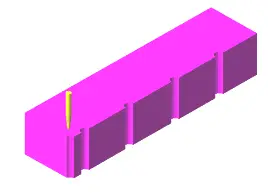
|
|
| Internal dents on the cutting surface | The. Cutting oxygen pressure is too high. B. The cutting speed is very fast. |
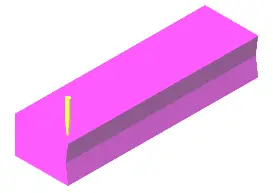
|
|
| Sloped cutting surface | The. The cutting torch is not perpendicular to the plate surface. B. The airline is distorted. w. The cutting oxygen pressure is low or the nozzle size is too small. |

|
|
| Beaded edge on cutting surface | The. The surface of the steel plate has oxidation and rust encrustation. B. The cutting nozzle is very close to the steel plate, with the flame very intense. |
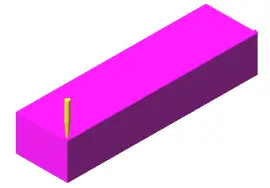
|
|
| Edge melted on the cutting surface | The. The preheating flame is very strong. B. The cutting speed is very slow. w. The cutting nozzle is too close to the plate. |
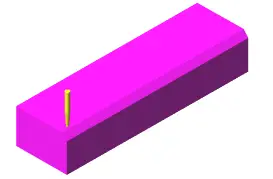
|
|
| Adhesion of residues on the lower cutting edge | The cutting speed is too fast or too slow. The nozzle size is very small. Cutting oxygen pressure is too low. |
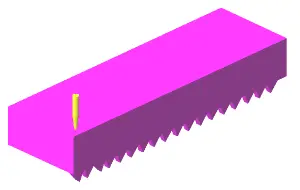
|
4.3.3 Measures to Guarantee Cut Quality
4.3.3.1 The cutting gas pressure must be adequate: if it is too high, the cut will be too wide; if it is too low, the oxidized slag will not be expelled and the material may not be completely cut. The molten slag in the cut tends to stick and is difficult to remove.
4.3.3.2 The thermal power of the preheating flame must be moderate: if it is too high, the cutting edges of the steel plate will melt; if it is too low, the cutting process may be interrupted, resulting in an uneven cutting surface.
4.3.3.3 The cutting speed must be appropriate to ensure that the molten slag and flame move vertically downwards. If the cutting speed is too high, it may not cut and may even cause the oxidized slag to float upward, causing a backfire. If the cutting speed is too slow, cutting increases and efficiency decreases.
4.3.3.4 The distance between the cutting torch and the steel plate to be cut must be adequate. If it is too low, the cutting nozzle will be prone to blocking and backfiring. If it is too high, the cut widens and it becomes difficult to guarantee the dimensions of the cut material.
4.3.3.5 The cutting torch must be kept clean and the nozzle must always be kept clean and smooth.
4.4 Safe Operation and Maintenance of Equipment
4.4.1 The storage of flammable and explosive materials is strictly prohibited in the cutting area.
4.4.2 Fuel gas cylinders used for cutting must be kept as far as possible from the oxygen interface, more than 5 meters away from open flames and sparks, and must be placed vertically and safely.
4.4.3 The use of pressure reducers must follow these rules:
a) Pressure gauges and reducers must undergo regular inspection as necessary. All pressure gauges and reducers in use must be within their inspection cycle and have a valid inspection mark.
b) Pressure reducers must be dedicated; those for different gases should not be exchanged.
c) When installing a pressure reducer, it is essential not to tighten it by hammering the nut.
d) Before installing a pressure reducer, check that the bottle mouth and reducer threads are intact and clean off dirt and grease.
e) When opening the gas cylinder valve, operators must avoid leaving the bottle valve and check whether there are leaks and whether the pressure gauge pointer is responding.
f) If the pressure reducer manometer malfunctions, its use must be immediately stopped and the department requested to replace it with a qualified manometer.
4.4.4 Oxygen and propane hoses must not be interchanged and hoses must be kept away from red-hot metals to prevent them from burning and causing a fire; Aged or cracked hoses must be replaced immediately.
4.4.5 In case of hose rupture or fire while using fuel gas hoses, the cutting torch flame must be extinguished first and the gas supply must be stopped; When an oxygen hose catches fire, the valve of the oxygen pipeline must be closed quickly, and it is strictly prohibited to extinguish the fire by bending the oxygen hose.
4.4.6 The rail must be kept clean, cleaned at least once a week and then lubricated with machine oil. Before starting the machine every day, the rail and both sides must be inspected; Nothing must obstruct the movement of the cutting torch holder.
4.4.7 The cutting torch gas passage must not be contaminated with grease. Operators are not allowed to handle oxygen cylinders and pressure reducing valves with greasy gloves to prevent explosions when oxygen comes into contact with grease.

